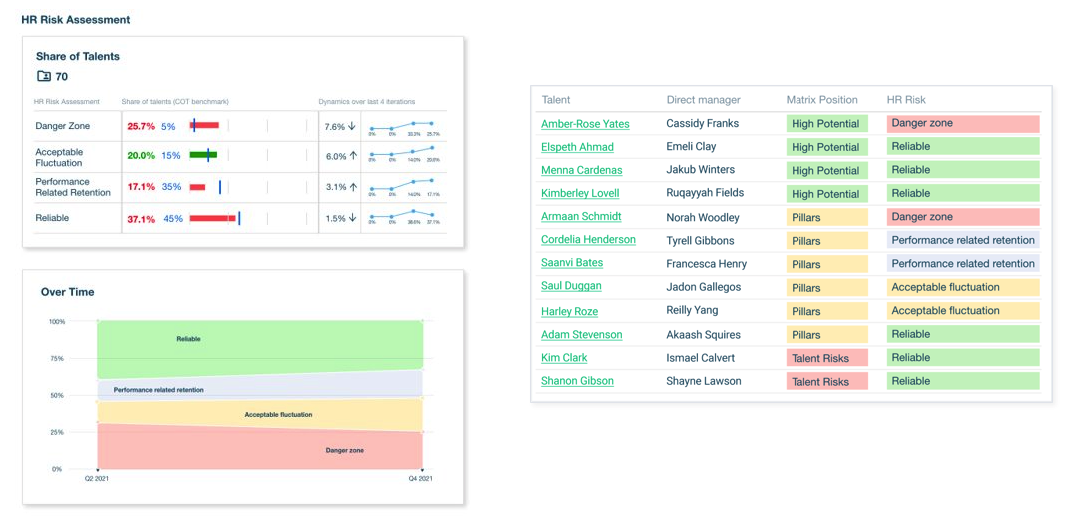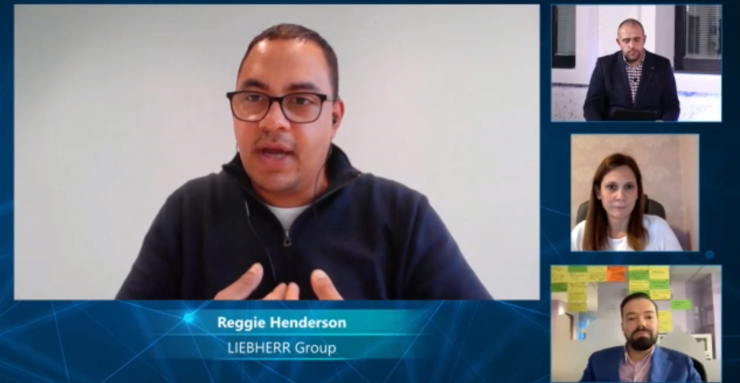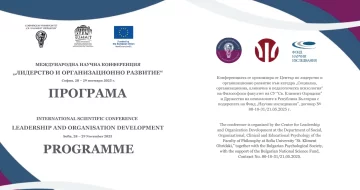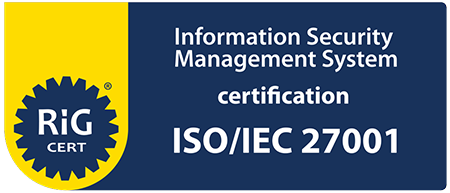On 18 November we had the pleasure to participate in the annual autumn conference of the Bulgarian Association for People Management. The topic of this year's virtual edition was "HR: SOCIAL VS. HUMAN DISTANCING" and directly reflected the challenges the entire HR community faced over the last year and a half. In line with the relevance of this topic, we also decided to address one of the new challenges for HR professionals and managers, namely talent management in a remote or hybrid work environment.
We set out to be as practically oriented and helpful as possible to our colleagues. Therefore, we chose to share our experience through practical examples presented by our partner Reggie Henderson, Head of Strategy HR(D) & Culture at LIEBHERR Group.
Challenges
Covid-19 has become an unavoidable business factor that has caused, or simply forced, many organizations to rethink their work processes and the way they manage, retain, and develop their talents. Too often, the problems in this area are related to more conservative or outdated internal practices for organizing, interpreting, and analyzing the leaders' activities connected to their obligation for developing their team members. Scattered paper-based leadership assessments, huge and complex Excel files, and slow data consolidation and analysis from an HR and organizational perspective are just some of the challenges HR professionals and team leaders have faced.
Due to the pandemic and the increased remote working, a growing need for a tech solution appeared that can provide data-driven support to leaders in order to manage their employees effectively, whether remotely, hybrid or on-site and develop and retain them successfully.
This was exactly the kind of information our partners at LIEBHERR Monterey needed. It had to support their HR department and management team with a data-driven analysis covering the company's most-used development actions, highest- and lowest-rated development actions, HR risk classification, positioning of each talent in a 9-box grid matrix according to their performance and potential, the activity of the company leaders, plus additional data for succession planning and risk forecast.
The Solution
According to Reggie Henderson, an HR talent management system such as SAP Success Factors is insufficient in terms of providing data and features for team leaders because it does not cover the manager's day-to-day obligations concerning their employees, plus the implementation process is slow. That's why they decided to move to a more flexible tech solution that could complement this system and provide a clear structure to analyze their talent portfolio quickly.
So, our paths with LIEBHERR have once again crossed with a common goal - to help the division leaders build strong and effective teams focused on employee development.
Implementation
The first and easiest step in accomplishing this goal at that time was testing our free Talent Portfolio App since all team leaders in the company had smartphones, and its interface was really simple and user-friendly. Using the Talent Portfolio free version, leaders could create their team profiles, regularly reflect their employees by 12 pre-defined factors, and receive Classic Portfolio reports divided into 9 groups based on their performance and potential. In addition, the app also provided them with information on situational leadership, leadership ambition, collaboration, HR risks, successors, and possible development actions for each talent on their team.
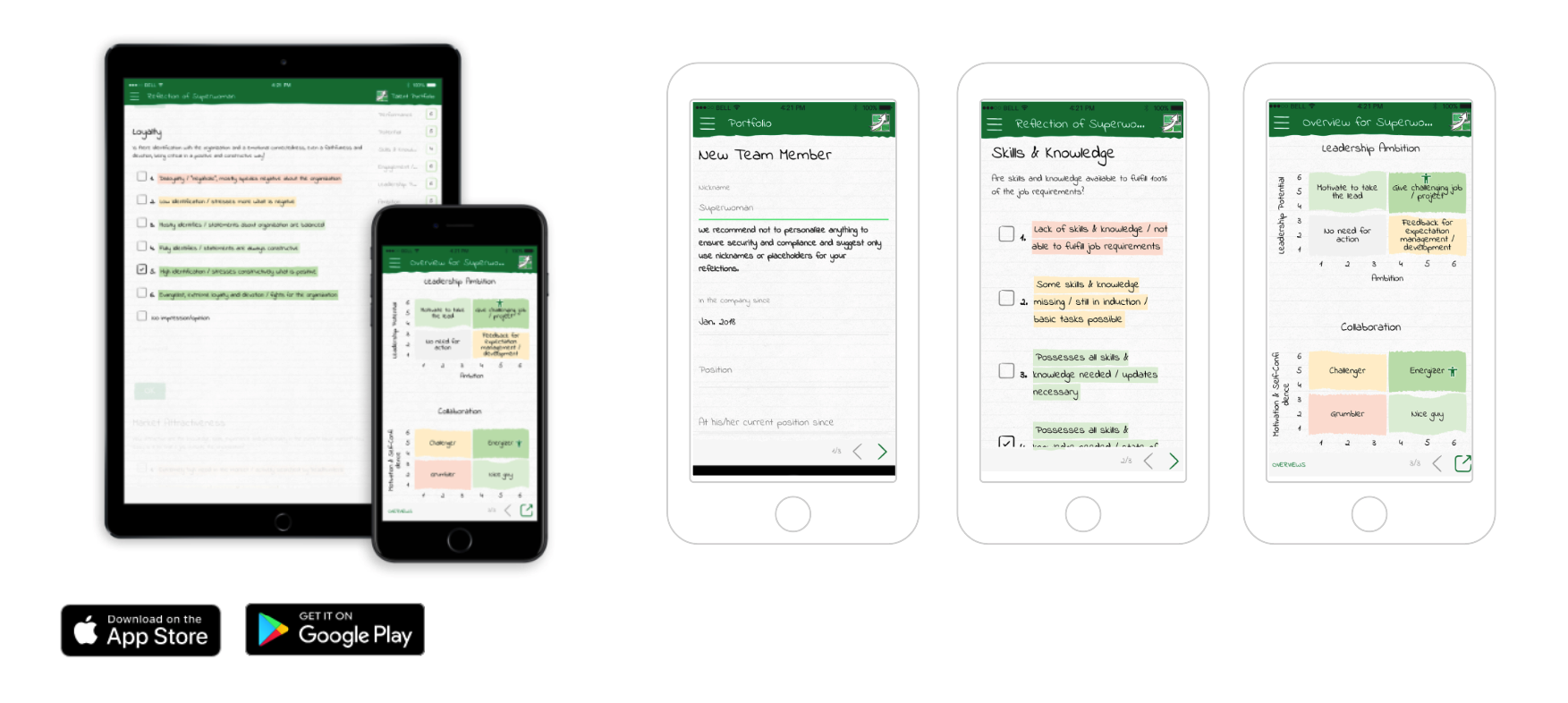
After 2 iterations with the free app, it appeared that the HR and management teams needed all the division leaders' data consolidated so that it could provide deeper analyses on the talent distribution in the 9-box grid, the situational leadership, and the retention risk forecast based on the data collected from the whole division. So LIEBHERR Monterey decided to move to the full web-based version of Talent Portfolio, which provided them with more options.

With the web-based version's implementation and the data accumulation, team leaders could track the dynamics of the reflections of each talent over time in all the reports available on the individual radar (classic portfolio, leadership ambition, team collaboration, risk management, etc.). In addition, they could track all the development actions, applied in previous periods for all their talents and rate the effectiveness of every action, based on pre-defined success criteria ratings.
The full version of Talent Portfolio enabled LIEBHERR Monterey's HR team to organize digital portfolio conferences that allowed them to easily invite team leaders to evaluate employees and also monitor how many leaders were involved in the process, how the process was going, and how engaged leaders were in developing their talents. In addition, the HR and management teams were given access to summary reports and data from the classic portfolio and all other dynamic reports and charts compiled on a company level with the option to filter the insight by different criteria easily.
The implementation of the web-based tool helped for rethinking and clarifying the division's organizational structure, which then improved the reporting and analysis capabilities based on positions, departments, organizational functions, responsibilities, etc. The flexibility of the web-based version of Talent Portfolio allowed LIEBHERR to redefine the 9-box grid matrix based on their reporting needs, dividing it into 4 categories fitting their strategic guidelines for reflection of employees' performance and potential.
The valuable data and analytics provided by Talent Portfolio have ensured more accurate planning across the division in terms of development, succession, and retention of talents. We have also introduced organizational benchmarks that allowed comparison of results between the different locations, business units and divisions.
Executive Leader’s Reactions
How did we explain to the managing directors the need for such a tool as Talent Portfolio? Very simple. Through the reports, insights and analysis provided by our tool, we answered three key questions in the directions: "What is our talent pool?"; "What are our leaders doing?"; "How stable is our organization?".
With our digital tool, you can monitor the talent portfolio of your team and company, how active the managers are in developing their talents, and when they need a reminder, support, or mentoring. You'll know the most popular development actions among leaders and which ones bring the best results. Based on actual data, you'll be able to create a clear vision of the potential of the individual employees in the different departments of your company and track their development over time.
